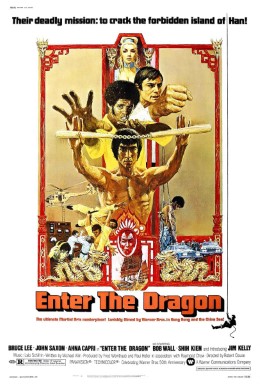
Enter the Dragon is a 1973 martial arts film directed by Robert Clouse and written by Michael Allin. The film, which stars Bruce Lee, John Saxon and Jim Kelly, was Lee's final completed film appearance before his death on 20 July 1973 at the age of 32. An American-Hong Kong co-production, the film was premiered in Los Angeles on 19 August 1973, one month after Lee's death.

Double Dragon is a beat 'em up video game series originally developed and published by Technōs Japan. It began with the release of the arcade game Double Dragon in 1987. The series features twin martial artists, Billy and Jimmy Lee, as they fight against various adversaries and rivals.

Super Double Dragon, released in Japan as Return of Double Dragon: "Sleeping Dragon" has Awoken, is a side-scrolling beat-'em-up released for the Super Nintendo Entertainment System in 1992. It was published by Tradewest in North America and the PAL region and by Technōs Japan in Japan. Super Double Dragon is the fourth console game in the Double Dragon series developed by Technōs Japan, following Double Dragon III: The Sacred Stones for the NES. The game did not have an arcade release and was made specifically for the home market.

Double Dragon II: The Revenge is a side-scrolling beat 'em up produced by Technōs Japan originally released as a coin-operated arcade game in 1988. It is the first sequel to Double Dragon, released during the previous year. The sequel involves Billy and Jimmy Lee in a mission to avenge Billy's girlfriend Marian after she is shot to death by the Black Warriors leader Willy, who is retaliating against the Lee brothers after his defeat at the end of the previous game. Double Dragon II was initially developed as an upgrade kit for the original Double Dragon, but evolved into a stand-alone game due to an increase in memory size, resulting in the developers reusing assets for both games.

Double Dragon Advance is a 2003 side-scrolling beat-em-up released for the Game Boy Advance. It was published by Atlus and developed by Japanese studio Million. It is a remake of the 1987 arcade game Double Dragon and incorporates elements from its sequels and home versions.
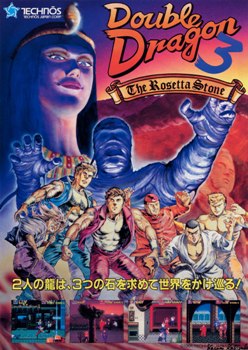
Double Dragon 3: The Rosetta Stone is a side-scrolling beat 'em up arcade game produced by Technōs Japan in 1990. It is the third arcade game in the Double Dragon series. Unlike the previous two games in the series, Double Dragon 3 was not developed internally at Technōs, but development was instead contracted to the company East Technology, resulting in a game that looks and plays differently from its predecessors.

The Big Brawl is a 1980 martial arts action comedy film, which marked Jackie Chan's first attempt to break into the American movie Hollywood market. A joint Hong Kong and American co-production, it was directed by American filmmaker Robert Clouse and featured much of the crew from Enter the Dragon (1973), which was also produced by Golden Harvest Studios. The film co-stars Mako, Kristine DeBell and José Ferrer.
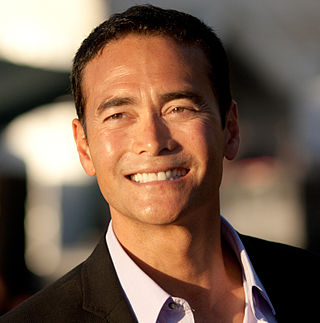
Mark Alan Dacascos is an American actor, martial artist, and television personality. A 4th-degree black belt in Wun Hop Kuen Do, he is known for his roles in action films, including as Louis Stevens in Only the Strong, the title role in Crying Freeman, Mani in Brotherhood of the Wolf, Ling in Cradle 2 the Grave, Sharish in Nomad, and as Zero in John Wick: Chapter 3 – Parabellum.
The Game of Death is an incomplete Hong Kong martial arts film, of which portions were filmed between September and October 1972, directed, written, produced by and starring Bruce Lee. The project was paused to film and produce Enter the Dragon. For The Game of Death, over 120 minutes of footage was shot, which was later misplaced in the Golden Harvest archives. The remaining footage has since been released with Lee's original Cantonese and English dialogue, with John Little dubbing Lee's Hai Tien character as part of the documentary titled Bruce Lee: A Warrior's Journey. Much of the footage that was shot is from what was to be the climax of the film.
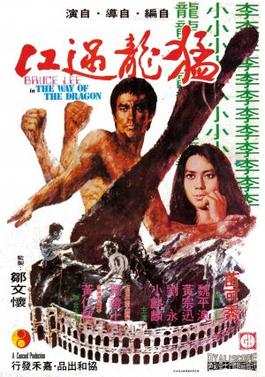
The Way of the Dragon is a 1972 Hong Kong martial arts action comedy film co-produced and directed by Bruce Lee, who also stars in the lead role. This is Lee's only complete directorial film and the last one released during his lifetime. The film co-stars Nora Miao, Robert Wall, Wei Ping-ou and Chuck Norris.
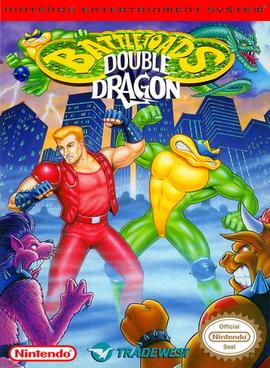
Battletoads/Double Dragon is a 1993 beat 'em up developed by Rare and published by Tradewest. It was originally released for the Nintendo Entertainment System and later ported to the Mega Drive/Genesis, Super NES, and Game Boy. Retro-bit Publishing has re-released the 8-bit NES version in early 2022 with plans to release the 16-bit versions later this year.

Double Dragon is a 1995 fighting video game spin-off of the Double Dragon series developed and published by Technōs Japan. It is based on the 1994 film, which in turn was based on the original arcade game. It was originally released for the Neo Geo and later released for the Neo Geo CD and PlayStation. It was Technōs Japan's last Double Dragon game before the company went out of business, and the fourth and final Double Dragon game released in arcades.

Double Dragon is a 1987 beat 'em up video game developed by Technōs Japan and distributed by Taito for arcades across Asia, North America and Europe. It is the first title in the Double Dragon franchise. The game's development was led by Yoshihisa Kishimoto, and it is a spiritual and technological successor to Technos' earlier beat 'em up, Nekketsu Kōha Kunio-kun (1986), released outside of Japan by Taito as Renegade; Kishimoto originally envisioned it as a direct sequel and part of the Kunio-kun series, before making it a new game with a different cast and setting.
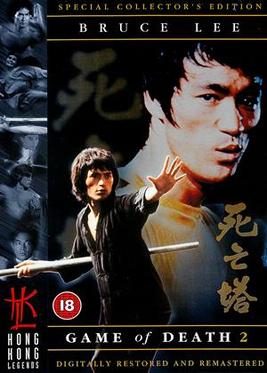
Game of Death II, also known as Tower of Death or The New Game of Death, is a 1981 Hong Kong martial arts film directed by Ng See-yuen and starring Bruce Lee, Tong Lung, Huong Cheng Li and Roy Horan. This film was marketed as a sequel to Bruce Lee's last and only partially completed film Game of Death. Bruce Lee died some years before the production of Game of Death II and most of his scenes are taken from Lee's older films, mostly Enter the Dragon. Aside from the international English dub giving the "Bruce Lee" character the name Billy Lo, this movie appears to have no connection with Robert Clouse's 1978 version of Game of Death.
Double Dragon is an animated series based on the NES versions of the Double Dragon video game trilogy, that ran for 26 half-hour episodes from 1993 to 1994. It was produced by DIC Animation City, Bohbot Entertainment, and Italian studio Reteitalia, S.p.A., in association with Spanish network Telecinco.

Double Dragon V: The Shadow Falls is a fighting game developed by Leland Interactive Media and published by Tradewest for the Super Nintendo Entertainment System and Sega Genesis in 1994. A port for the Atari Jaguar developed by Telegames was released the following year. It is an American-produced sequel to the Double Dragon series by Technōs Japan, who had little to no credited involvement in the development of the game outside of licensing the IP to the publisher outside Japan.

Rage of the Dragons is a 2002 tag team head-to-head fighting game released for the Neo Geo hardware by Playmore. The game was developed by Japanese company Noise Factory, co-developed by BrezzaSoft and chiefly-designed by the Mexican team Evoga. As of May 2020, Piko Interactive has acquired the game's IP and has expressed interest in using it in some way. Ports for Nintendo Switch, PlayStation 4 and PlayStation 5, and Xbox One and Xbox Series are scheduled for a future release, ported by QUByte Interactive. In April 2024, during EVO Japan it was announced that new Rage Of The Dragons game called Rage of the Dragons W is in the works.

Abobo's Big Adventure is a freeware parody flash game. Inspired by various video games released for the Nintendo Entertainment System, the game features Abobo, a boss character from the Double Dragon franchise, traveling through the worlds of several different games to save his son. Written by I-Mockery.com founder Roger Barr, programmed by Nick Pasto, with art and animation by PoxPower, Abobo's Big Adventure was released in January 2012 to positive critical reception.

Double Dragon Neon is a 2012 beat 'em up video game in the Double Dragon series. It was developed by WayForward Technologies and published by Majesco Entertainment, and is a reboot of the Double Dragon series. It was the first game in the series where Million, the previous owner of the Double Dragon series after Technōs Japan became defunct, had no involvement in its development. Arc System Works bought the series rights in 2015 along with all intellectual properties of Technōs Japan.

Double Dragon Gaiden: Rise of the Dragons is a 2023 beat 'em up video game developed by Secret Base and published by Modus Games. It is a spin-off the Double Dragon franchise, set before the events of the first game. It was released for the Nintendo Switch, PlayStation 4, PlayStation 5, Windows, Xbox One, and Xbox Series X/S on July 27, 2023.


















